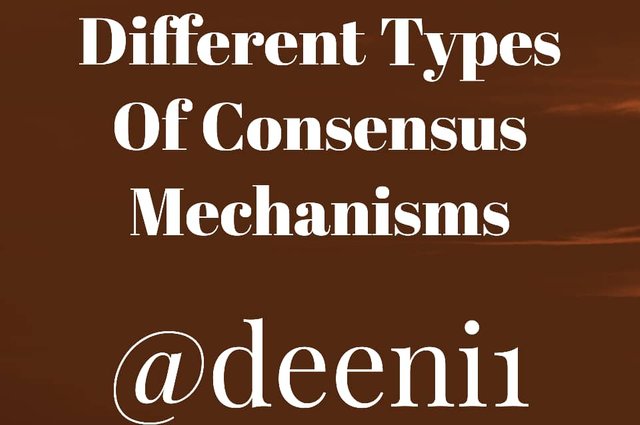Crypto Academy Introdutory Beginners Course Task 4: Different Types Of Consensus Mechanisms

Before getting to know the difference between these two terms, i think it will be better to understand what each of them means and what they are before going straight to their differences. Let’s look at PoW first.
PoW which means Proof -of-Work. It is a consensus mechanism through which transactions are upgraded on a blockchain. In any case it is usually not a easy process to take place. It requires tackling of complex crypto puzzles and numerical calculations. Whoever interprets the puzzles, can proceed onto updating the the next piece of transactions on that particular cryptocurrency blockchain. The mechanism of confirming the transactions is a difficult task to overcome requiring a lot of work but the miners attempt to exceed each other in order to be rewarded by the system after successfully verifying the transaction. Each confirmed transaction comes about the creation of new block that is added to the public blockchain.
PoS which means Proof-of-Stake. This is another consensus protocol which chooses the validators based on the stake they claim in that particular cryptocurrency. These validators, hence, make blocks and approve transactions on that blockchain. The validator can lose portion of his stake in case he approves fake transactions, as such, the coins stored by a validator as a stake ought to continuously be more than he gets for approving the transactions, in this way validator can maintain discipline and abstain from endorsing fake transactions.
Now let’s look at the differences between these two consensus mechanisms;
1. Not all participant can solve the puzzle in PoW but in PoS every validator can validate the block per his crypto assets.
2. With PoW, it uses high quantity of non-renewable energy while PoS uses low energy.
3. Satoshi Nakamoto implemented PoW protocol for the first time into the system whereas PoS mechanism was established under Scott Nadal and Sunny King.
4. PoW is a decentralised mechanism while PoS has centralisation features.
5. In PoW it is the miners that verify transactions in but in PoS validators carry out the task.
6. Minners in PoW gain block rewards for their work. but validators are rewarded part of the transaction fees in PoS.
Below are some of the advantages of PoW;
1. Miners are rewarded in Blocks for their effort.
2. The transactions involve are reliable and accurate.
3. It is secure and less prone to cyber attacks.
4. Protocols involve are more decentralized in nature.
1. Commercial transactions are time consuming.
2. It consumes huge amount of energy which leads to negative environmental issues.
3. It also requires tremendous computer power and costly resources.
1. It has better scalability.
2. There is no huge energy consumption thereby making the environment friendly.
3. Does not need heavy computing resources as in PoW.
4. Anyone can become a validator if he/she has resources to keep at stake.
1. It has a centralized system.
2. Validation of wrong transactions is possible.
3. Prone to cyber attacks, since the systems are not fully secured.
First of all let’s understand the term scaling capacity before comparing the two consensus mechanisms to see which one is better.
Scaling Capacity is the amount of transactions that a specific crypto blockchain system can take within a limited amount of time.
With regards to the above explained it is obvious that PoS protocol has a better scalability than PoW protocol. The main issue of scalability with Proof-of-Work method is the smaller block sizes and increasing the sizes of the block is not a permanent solution. Moreover, The PoS model was introduced as an alternative to the PoW aiming to do away with the shortcomings that are in PoW. It doesn't use the mining process that requires alot of energy. It also requires an agreement prior to block formation. This minimizes transaction time as well as energy consumption, thus proving to be better in terms of scalability.
Example Of PoS
Ethereum, ShadowCoin, peercoin etc
In conclusion, Proof-of-Stake has a better scaling capacity and should be recommended to all crypto assets. Thank you all. Best regards to professor @sapwood for this educative lecture.
Hi @deeni1, Thank you for taking interest in the 4th Task of the Beginners Fixed Class. Your grades are as follows:
My Review and Suggestions:
You have completed the task.
There are some discussions that are still shallow.
You did not mention examples of cryptocurrencies that use PoW.
There are some grammatical errors, please pay attention to grammar before posting.
You use bold writing well to emphasize important words. Good work!!
Thank you!